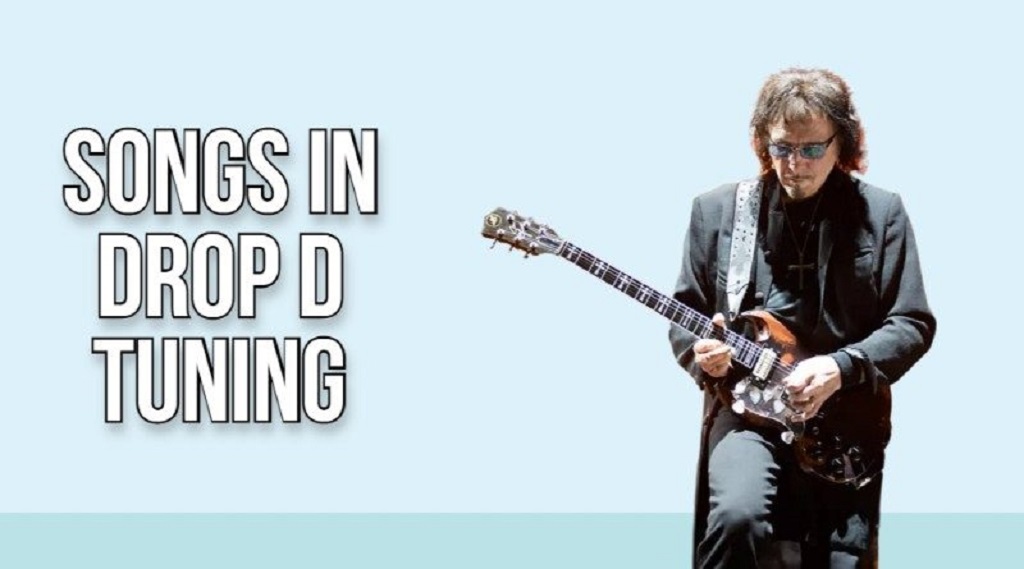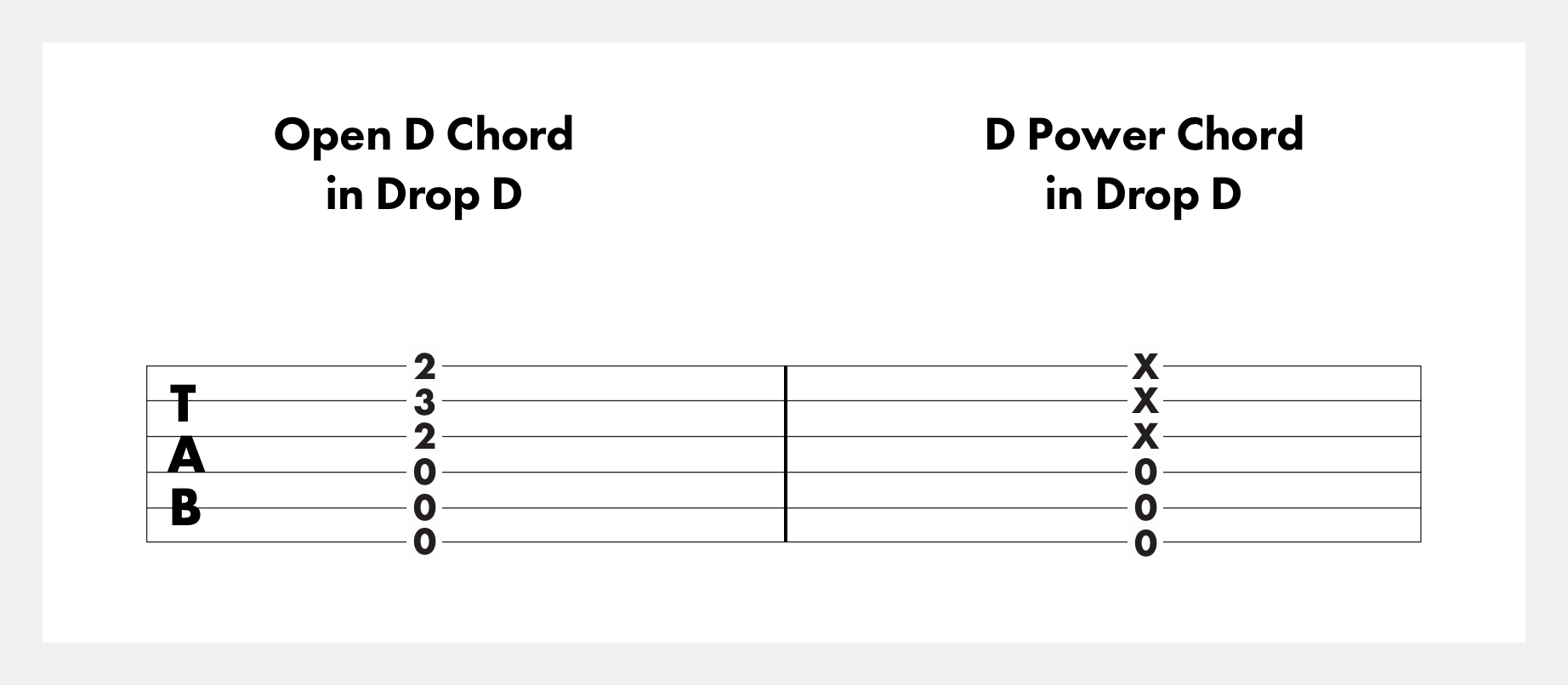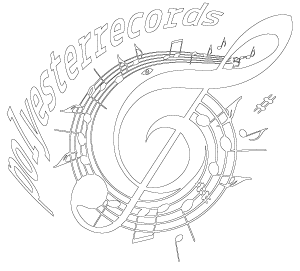
17 Jan What Band Plays Songs in Drop D?
Guitar tunings come in all shapes and sizes. Standard tuning is EADGBE, with the lowest string tuned to E. But some bands prefer to tune down, dropping the lowest E string down a whole step to D. This is known as drop D tuning. It creates a heavier, darker sound perfect for hard rock and metal.
So who are the pioneers of drop D? And what songs showcase this deep, rumbling tuning? Grab your guitar and get ready to chug along. This guide will explore the world of songs in drop d and the bands that rock it best.
A Brief History of Songs in Drop D

Drop D tuning likely originated in the blues scene. Early blues guitarists would sometimes tune down to create a heavier, sludgier vibe. As the 1960s rolled around, rock bands started experimenting more with alternate tunings.
The Beatles’ “Baby’s in Black” from 1964 features a guitar in drop D. John Lennon had received a guitar with a broken E string. Rather than restring it, he tuned the E string down to D. He ended up liking the unique sound so much that he kept the tuning for the track.
Other 1960s rock acts like The Rolling Stones and The Kinks also dabbled in drop D at times. But it was the heavy rock of the late 1960s and early 1970s that really popularized it.
Led Zeppelin was one of the first bands to adopt drop D tuning for multiple songs. Their heavy, blues-influenced sound was a perfect match. Jimmy Page used the tuning for songs like “Moby Dick,” “House of the Holy,” and “Kashmir.”
Black Sabbath also employed dropped tunings to darken their signature doom metal tones. Tony Iommi tuned to drop D for tracks like “Into the Void” and “Supernaut.”
As the 70s progressed, drop D became an integral part of the heavy rock and proto-metal sound. Bands that followed in Zeppelin and Sabbath’s footsteps continued to tune down. Soon drop D was a go-to weapon for hard rock guitarists wanting to get that extra punch.
Pioneers of the Drop D Sound
In the 1980s and 90s, thrash, grunge, and alternative metal bands pushed drop D tuning into the mainstream. Let’s look at some of the influential groups that defined the drop D sound in each decade.
1980s: Thrash Titans
Thrash metal bands of the 80s relied heavily on drop D. Fast, aggressive riffing sounded massive when tuned down a whole step. Anthrax, Megadeth, and Metallica all dropped their low E strings with regularity.
Some classic thrash tracks showcasing Drop D include:
- Anthrax – “Caught in a Mosh”
- Megadeth – “Holy Wars…The Punishment Due”
- Metallica – “Sad but True”
Without these thrash pioneers popularizing it, drop D may never have caught on so widely. Their guitar-driven, adrenaline-fueled style was the perfect match for the tuning.
1990s: Grunge Goes Down
When grunge roared out of Seattle in the early 90s, drop D came along for the ride. The lower tuning matched the brooding, downtrodden vibe of the genre. Bands like Nirvana, Alice in Chains, and Soundgarden all employed drop D to darken their guitar tones.
Some grunge classics with drop D tuning include:
- Nirvana – “Lithium”
- Alice in Chains – “Man in the Box”
- Soundgarden – “Outshined”
The crunchy, murky guitars on these tracks simply wouldn’t have the same vibe in standard tuning. Drop D gave grunge its characteristic ominous snarl.
1990s: Nu Metal Downward Spiral
At the same time grunge was emerging, a new blend of metal, punk, and hip-hop was forming. Nu metal bands like Korn and Deftones relied on detuned guitars as a core part of their sound.
Songs in drop d provided the perfect amount of grit and darkness for nu metal. Korn basically invented their own genre with their self-titled 1994 debut album. Nearly every track on it is in drop D, including classics like “Blind” and “Shoots and Ladders.”
Other nu metal groups that employed liberal amounts of drop D included Deftones, Coal Chamber, and System of a Down. Songs like “My Own Summer (Shove It)” by Deftones and “Bodies” by Drowning Pool would be unimaginable without that low, churning D.
Nu metal’s down-tuned detuning opened the floodgates for even lower tunings in future metal genres. But it all started with bands dropping that low E to D.
Modern Bands Keeping Drop D Alive

While drop D peaked in popularity in the 80s, 90s, and early 2000s, many modern bands still use it. Genres like metalcore and djent often tune the entire guitar down, but will drop the lowest string an additional step. Let’s check out some more recent groups flying the drop D flag.
Metalcore Chugs in Drop D
Metalcore is known for aggressive riffing, breakdowns, and low tunings. Many bands in the genre tune to drop D or drop C. The punchy chugging of metalcore riffs sounds massive when tuned down.
Some metalcore tracks utilizing drop D:
- Killswitch Engage – “My Curse”
- Bullet for My Valentine – “Tears Don’t Fall”
- August Burns Red – “Composure”
You can instantly hear the difference in heft and impact when metalcore bands hit those low D chugs. The tuning has become a staple of the genre thanks to its beefy sound.
Djent Djives Down Deep
Djent is an offshoot of prog metal known for syncopated, palm-muted riffing. The name comes from the distinctive “djent” sound these chugs produce.
Djent bands tune down even lower than standard metalcore for the utmost heaviness. Guitars are often tuned down to Drop C or lower. But the lowest string gets dropped an additional step to sit menacingly at D.
Some djent tracks in drop D include:
- Periphery – “Icarus Lives!”
- Veil of Maya – “Mikasa”
- After the Burial – “Berzerker”
That ultra-low D string gives djent bands that super thick tone essential to the genre. It allows them to chug away to their heart’s content, creating seismic rhythms.
Stoner Rock Sludges in Drop D
Stoner rock is known for its slow, heavy, psychedelic vibe. To generate their swampy, sludgy sound, stoner bands often tune down. Drop D features heavily in the genre, providing the perfect grit and grind.
Some stoner rock classics in drop D:
- Kyuss – “Green Machine”
- Sleep – “Dragonaut”
- Fu Manchu – “King of the Road”
Without that loose, rumbling bottom string, these tracks would lose their rambling, hypnotic feel. Drop D is the perfect complement to stoner rock’s laidback, fuzzed-out style.
Songs that Shaped the Sound of Drop D
We’ve covered the bands that pioneered and popularized drop D tuning across decades of rock and metal. Now let’s dive into some specific songs that showcase why this tuning just sounds so darn good.
Here are 10 tracks that exemplify the signature drop D sound:
“Moby Dick” – Led Zeppelin
Jimmy Page helped introduce drop D to the masses with this epic drum solo vehicle from 1969. The tuning added extra thickness and oomph to Page’s riffing underneath John Bonham’s masterful percussion.
“Holy Wars…The Punishment Due” – Megadeth
Dave Mustaine put drop D front and center on this thrash metal classic from 1990. The opening licks are built around a simple drop D riff that sounds heavier than a sledgehammer.
“Would?” – Alice In Chains
Jerry Cantrell’s ominous acoustic intro set the tone for grunge’s darker side. When the full band kicked in, Layne Staley’s brooding vocals soared over lumbering drop D guitars.
“Blind” – Korn
Korn’s debut single introduced the world to their down-tuned nu metal sound. Munky and Head’s gritty drop D riffs interlocked with Reginald Arvizu’s clacking bass. Jonathan Davis’ anguished vocals completed the package.
“Cochise” – Audioslave
After Rage Against the Machine, Tom Morello carried his drop D mastery over to Audioslave. On this single, his signature riffs pushed against Chris Cornell’s powerhouse vocals.
“Outshined” – Soundgarden
Chris Cornell again soared over drop D riffage on this grunge gem. Kim Thayil’s off-kilter riffs and detuned grind punctuated Cornell’s huge vocals.
“Buried Alive” – Avenged Sevenfold
- Shadows brooding vocals and Synyster Gates’ frantic drop D riffage made this a metalcore classic. The tuning added an extra sinister edge throughout.
“Bwaaaahhh” – Meshuggah
No list would be complete without these Swedish djent pioneers. The syncopated eight-string riffs on this track demonstrated the heaviness drop D enabled.
“Demon Cleaner” – Kyuss
Josh Homme’s early stoner rock outfit churned this track along in drop D. The loose, rumbling feel matched the hallucinogenic vibe perfectly.
“I Stay Away” – Alice In Chains
Jerry Cantrell’s melancholy vocal melodies floated above yet more drop D gloom. The tuning captured AiC’s signature brooding sound.
Uses and Advantages of Drop D Tuning

Now that we’ve explored its origins and exemplary songs, let’s discuss why drop D tuning is so popular. What unique advantages does it offer over standard tuning?
Here are some of the main benefits and applications of drop D:
- Heavier sound – Dropping that low E string down to D creates a deeper, thicker tone. It adds a darker, heavier vibe perfect for hard rock and metal.
- Easier power chords – Songs utilizing the lowest three strings are easier to play in drop D. The shape of power chords becomes just one finger across those strings.
- Open D chord – Tuning the low E string down to D allows easy access to the ominous-sounding open D chord. Droning on this creates an atmospheric bed for riffs and solos.
- Lower riffing – Drop D enables riffs that utilize the lowest strings to be written an additional step down. Guitarists can come up with heavier riffs than they could in standard tuning.
- Alternate voicings – The modified string intervals open up new chord voicing options. Drop D chords take on a different flavor than their standard tuning counterparts.
- Ergonomic playing – For some guitarists, drop D is more comfortable to play than standard tuning. The ability to play power chords with one finger makes riffing easier for many.
Whether you want to sound sinister, play huge riffs, or just beef up your tone, drop D has plenty of advantages. Its popularity across rock and metal genres is a testament to its heavyweight sound.
How to Tune To Drop D

Ready to tune down and rock out in drop D? Here are some tips to get you started:
- Guitar setup – Make sure your guitar is set up properly for drop D tuning. You may need a truss rod adjustment and string gauge change to handle the lowered tension. Ask your local guitar tech for help.
- Tune carefully – When lowering your E string to D, tune slowly and carefully. Rapidly loosening a string can damage it or cause it to snap. Tune down in increments, not all at once.
- Learn the chords – Familiarize yourself with basic chords like D, Em, G, and A when played in drop D. Their voicings will differ from standard tuning.
- Practice power chords – Get comfortable with barring power chords across the lowest three strings. This is a hallmark drop D technique.
- Have patience – Give yourself time to adjust to the new tuning. It will take a bit for your fingers and ears to adapt to the new intervals and voicings.
- Try simple songs – Look up beginner-friendly songs in drop D like “Come As You Are” by Nirvana or “Down” by 311. These are great practice tunes.
With some care and practice, you’ll be rocking monstrous riffs and dark chord vamps in no time. Drop D opens up a whole new world of guitar tones and techniques. Get ready to get heavy!
FAQs
What gauge strings should I use for drop D tuning?
For most guitars, stepping up to 11 or 12-gauge strings will provide the proper tension in drop D. You may also need to tighten the truss rod slightly to account for the lowered tension.
Which electric guitars are best suited for drop D tuning?
Guitars with shorter scale lengths of 24.75 inches, like Gibsons, are usually ideal for drop D and other lowered tunings. The shorter scale provides increased string tension.
Can I tune only the low E string down while leaving the rest in standard tuning?
Absolutely! Muting the other strings, this “drop D” tuning allows you to preserve standard tuning up top while getting those low D rumbles.
What songs are played with drop C# tuning vs. drop D?
Drop C# lowers the low E to C#, one half step below drop D. Some bands that utilize drop C# are Slipknot, Mastodon, and Machine Head.
What chord progressions work well in drop D tuning?
Chord vamps utilizing D, C, G, and A minor work great. The open D and A minor have a nice ominous vibe. Slow progressions in drop D evoke brooding, heavy tones.
Final Thoughts on Rocking in Drop D
If crunchy riffs, dark vibes, and thundering bottom strings are your thing, drop D tuning is calling your name. From Black Sabbath to Korn to modern metalcore, tuning down that low E string has been the secret weapon of rock and metal acts for decades.
Drop D adds a sinister, sludgy flavor that standard tuning just can’t match. It enabled the creation of countless classics across metal, punk, grunge, stoner rock, and other genres. Mastering the art of the power chord and coming up with your own monstrous songs in drop d riffs is deeply rewarding.

Sorry, the comment form is closed at this time.